
The use of wind energy is mainly to convert the kinetic energy of the atmosphere into other forms of energy. Its specific uses include: wind power generation, sailing aids to navigation, windmills to lift water, wind heating and so on.
main content:
1. Wind power
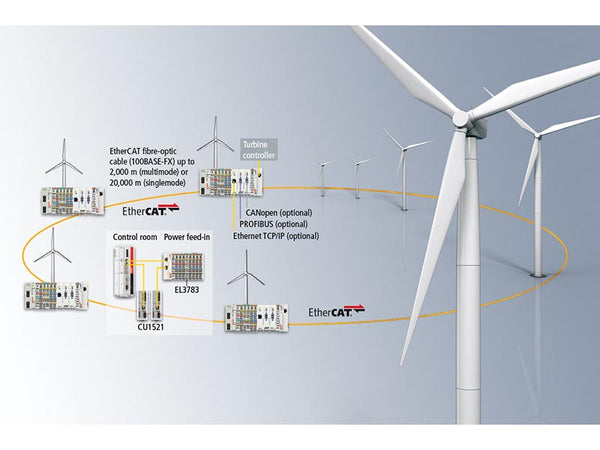
Wind power is the most important form of wind energy utilization. In recent years, with the advancement of science and technology, the cost of using wind to generate electricity has been reduced a lot. Even if other external costs are not included, the cost of using wind power in many suitable locations is lower than that of fuel-burning internal combustion engines. The global annual growth rate of wind power generation was about 25% in 2002, and now it is growing rapidly at a rate of 38%. In 2003, the growth of wind power in the United States exceeded the average growth rate of all generators. Since 2004, wind power has become the cheapest among all new energy sources. In 2005, the cost of wind energy has dropped to one-fifth of what it was in the 1990s, and with the use of large-wattage generators, the downward trend will continue.
(1)Principles and methods of wind power generation
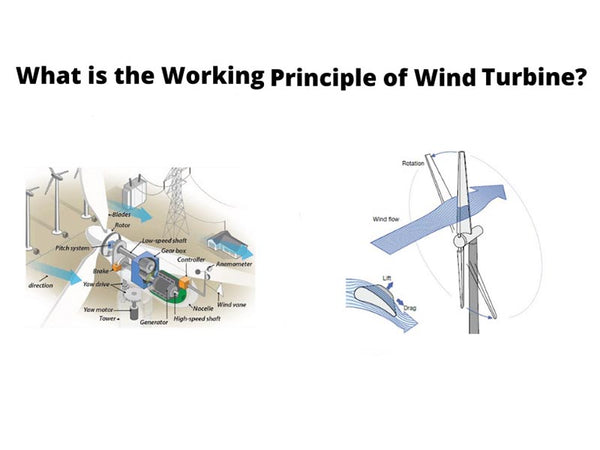
Wind power generation relies on wind turbines to convert wind energy into electrical energy. The wind wheel of the wind turbine is composed of three blades made of glass fiber reinforced plastic or nylon. The wind blows the wind wheel to rotate, and the low-speed rotation (about 18~33r/min) on the wind turbine shaft is converted into the high-speed rotation (800r/min or 1500r/min) required by the generator through the variable speed gear box, and then transmitted to The generator shaft rotates it to generate electricity.
When the wind wheel of the wind turbine is facing the wind direction, the wind wheel can get the most wind energy. In order to ensure that the wind wheel is facing the wind direction at all times, a yaw system is provided in the wind turbine. When the wind vane installed on the top of the nacelle detects that the wind wheel is not facing the wind direction, it will issue a yaw command, and the nacelle and the wind wheel will rotate around the vertical axis of the tower through the yaw system to achieve the purpose of aligning the wind direction. The speed of the wind wheel and the output power of the generator increase with the increase of wind speed. Too much wind speed will cause the wind wheel speed to be too fast and the generator overload operation, which will cause operation accidents of the wind generator. In order to ensure the safe operation of wind turbines, the wind turbines are equipped with speed-limiting safety devices to adjust the speed of the wind turbine rotors, so that they remain basically unchanged within a certain range of wind speeds, so that the wind turbines can be stable under different wind conditions run. There are two main types of wind wheel speed adjustment methods, one is the fixed pitch of the wind turbine blades, and the other is the variable pitch of the wind turbine blades. The fixed-pitch speed regulation method is that when the wind speed increases, the wind wheel is rotated around the vertical axis through various mechanisms to deviate the wind direction and reduce the windward surface and the wind force to achieve the purpose of speed regulation. The variable-pitch speed regulation method is that when the wind speed changes, a set of blade angle adjustment device is used to rotate the blades to change the angle of action between the blades and the wind, so that the wind force experienced by the wind wheel changes, so as to achieve speed regulation. the goal of.
Of the two speed control methods, the former has a relatively simple structure, but the unit structure is subject to greater force, while the latter adds a blade angle adjustment device, which increases the cost but can keep the unit stable at higher than the rated wind speed. Power output, increase power generation. Therefore, the variable-pitch speed regulation method is rarely used in medium and small wind turbines, while the variable-pitch speed regulation method is mostly used in large-scale wind turbines. In addition to the speed limit device, the wind turbine is also equipped with a brake. When the wind speed is too high, the brake can stop the wind wheel to ensure the safety of the wind turbine at extremely high wind speeds. The design theory of horizontal-axis wind turbines shows that at a certain ratio of wind turbine rotational speed to wind speed, the wind turbine's rotor has the highest conversion efficiency to wind energy. For commonly used constant-speed wind turbines with constant speed, the optimal ratio of wind turbine speed to wind speed cannot be maintained when the wind speed changes, so the wind energy conversion efficiency cannot always be maintained at the optimal value. However, the constant-speed wind turbine can output constant-frequency alternating current, which is convenient for connecting to the grid. The subsequently developed variable speed wind turbines can maintain the best ratio of speed to wind speed at different wind speeds, so the wind energy conversion efficiency is high, and generally can increase power generation by about 10% compared with constant speed wind turbines. However, the frequency of its output current is unstable, and an additional frequency conversion device must be added to realize the output of constant-frequency alternating current in order to connect to the grid. At present, most large-scale wind turbines with a single unit power exceeding 1MW adopt variable speed operation.
The types of wind turbines mainly include horizontal-axis wind turbines and vertical-axis wind turbines. Among them, the horizontal axis wind turbine is currently the most mature technology and the most productive form. The horizontal-axis wind turbine is composed of wind wheels, speed-increasing gearboxes, generators, yaw devices, control systems, towers and other components. The wind wheel converts wind energy into mechanical energy, and the low-speed rotating wind wheel is accelerated by a speed increasing gear box through the transmission system, and the power is transmitted to the generator. The entire nacelle is lifted by a tall tower. Due to the frequent changes in wind direction, in order to effectively use wind energy, an upwind device is also installed. According to the wind direction signal measured by the wind direction sensor, the controller controls the yaw motor to drive it on the tower. The small gear meshed by the large gear rotates so that the nacelle is always facing the wind. In areas with insufficient power, in order to save fuel for diesel power generation, wind power and diesel power generation can be used to complement each other to form a wind-diesel complementary power generation system.
The rotation axis of the wind wheel of the vertical axis wind turbine is perpendicular to the ground. There are many types of such wind turbines, but the most representative one is the wind turbine invented by French engineer Darrieus. The wind wheel of this wind turbine is composed of 2 to 4 rope skipping curved blades. The advantage is that it is not affected by the wind direction and can use the wind blowing from any direction, so there is no need for a wind device, the generator and the variable speed gear box can be placed on the ground, the structure is simple, the cost is low, and the maintenance is easy. The disadvantage is that there is a part of the wind wheel near the ground. Because the wind near the ground is low, the wind energy conversion efficiency is low. Here, there are also problems such as inconvenience in starting and parking blade manufacturing, transportation and installation. Therefore, 98% of wind turbines currently use horizontal axis wind turbines, and vertical axis wind turbines are rarely used. In 1987, Canada developed a large vertical axis wind turbine of this type with a capacity of 4.2MW and a diameter of 100m. It has also been out of service.
The tower in the wind turbine puts the wind wheel and nacelle in the air to obtain more wind energy. The tower has two main structures, one is a cone-shaped cylindrical tower made of steel plate, and the other is a truss-type tower made of angle steel. Both are equipped with ladders and safety cables to facilitate maintenance personnel. Enter the cabin. Large and medium-sized wind turbines are equipped with a control system composed of a microcomputer and control software, which can automatically control the startup, shutdown, speed regulation, and fault protection of the unit, and can automatically display and record the operating parameters and working conditions of the unit. Ensure the safe and economical operation of the unit.
Wind turbines can be divided into off-grid wind power systems and grid-connected wind power systems according to their operating modes. The former operates independently and is mainly used in remote rural areas, pastoral areas, islands and other areas away from the power grid. The power of the unit is relatively small (generally less than 5kW). In this system, the alternating current output by the wind alternator is rectified by the rectifier and then input to the storage battery for energy storage, and then used by the direct current load. If the user needs AC power, an inverter should be installed between the battery and the user before sending it to the user. During periods of no wind, it can be powered by batteries. Wind turbines can also be combined with diesel generators or solar power generation systems to form a complementary combined power generation system. When the wind turbine cannot output enough power, another system can provide backup power. The grid-connected operation of wind turbines means that the wind turbines are connected to the grid and the output power is merged into the grid. Commonly used wind power generators with constant speed and frequency have been commonly used. For variable-speed wind turbines, it is necessary to add a frequency conversion device to make the output current reach a constant frequency before connecting to the grid.
The advantages of wind power generation can be summarized into three points: First, the cost of building wind farms is low, which is much lower than that of hydroelectric power plants, thermal power plants or nuclear power plants; second, there is no need for coal for thermal power generation. , Oil and other fuels or nuclear materials required by nuclear power plants can generate electricity, except for routine maintenance, no other consumption; third, wind is a clean natural energy, there is no environment associated with coal power, oil power and nuclear power pollution problem.
Modern wind turbines have enhanced anti-storm ability; wind turbine blades are widely used light-weight materials; modern aviation aerodynamics is used to increase the wind energy utilization coefficient to about 0.45; microprocessor control is used to keep the wind turbine at its best In operation, the wind turbine array system has been developed; the structure of the wind turbine is diversified.
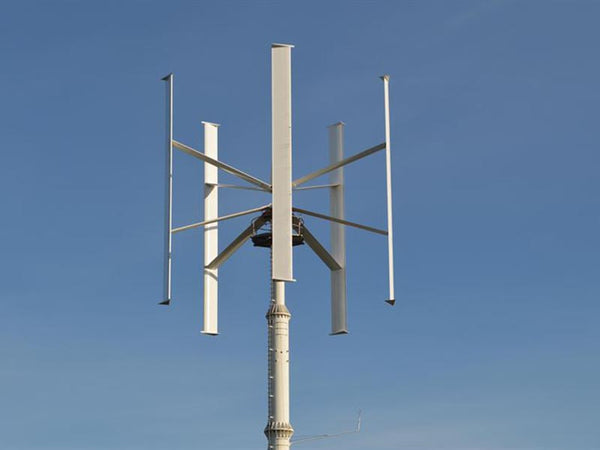
The vertical axis wind wheel invented by the French in the 1920s has become one of the most promising wind turbines after being submerged for more than half a century. This structure has many forms. It has the advantages of high running speed, high efficiency and simple transmission mechanism, but it needs auxiliary device to start. People have also put forward many new ideas, such as vortex energy-collecting wind turbines. It is estimated that the single-machine power of this system will be 100 to 1000 times that of conventional wind turbines.
2. Other uses of wind energy
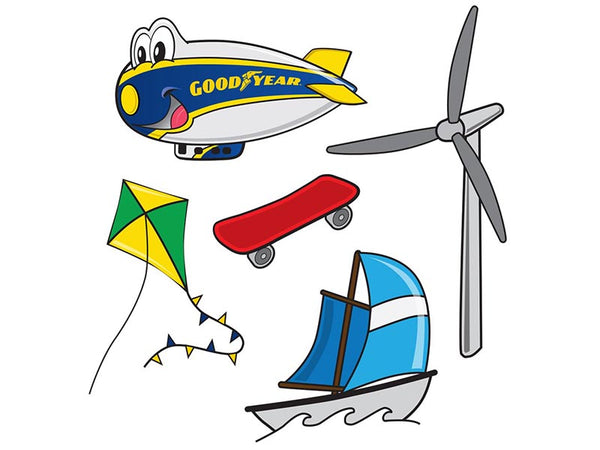
In addition to power generation, wind energy is also widely used in projects such as water lifting, irrigation, navigation aids for ships, and wind heating.
(1)Wind lift
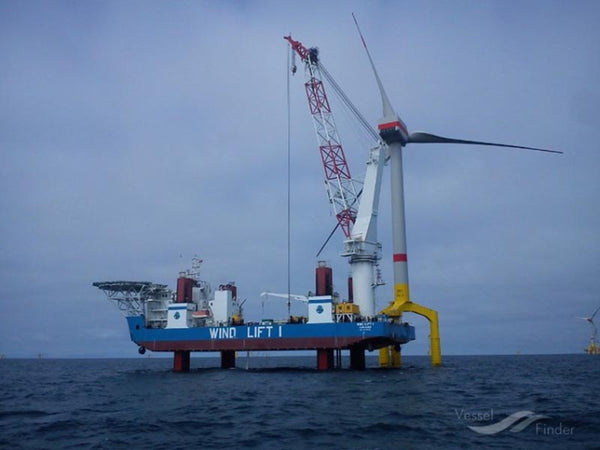
Wind water lifting can be used for water lifting operations in farmland irrigation, drinking water for humans and livestock, salt production from seawater, aquaculture, pasture improvement or tidal flat renovation, etc., with significant economic and social benefits. China has used sail-style windmills to lift water as early as 1700 years ago. There is a record of "filling the field with six sails and water" in the ancient scientific work "Physics Brief". In the 10th century, the Islamic people used windmills to lift water and were widely used in the Middle East. After windmills were promoted and applied in Europe in the 12th to 14th centuries, the Netherlands used them to lift water from lakes and low wetlands in the Rhine Delta and for grain milling and oil extraction operations. By the end of the 1950s in China, this traditional sail-style windmill water lifter was still widely used in the coastal areas of Jiangnan and Fujian, and there were more than 200,000 units in Jiangsu alone. There were as many as millions of multi-leaf wind pumps used in the Midwestern United States at the end of the 19th century. At present, industrialized countries such as the United States, Britain, the Netherlands, and Denmark, as well as developing countries such as India and Mexico, are developing and applying wind water pumps that match their national conditions.
The general working principle of the wind water pump is to move the shaft of the wind turbine that rotates due to the wind, and use a transmission mechanism to convert it into a vertical up and down movement or a faster rotational speed to drive the piston connected to it. Type water pump or rotary type water pump.
There are two main types of wind pumps currently developed and produced in China. One is a low-lift and large-flow wind pump, which is used to extract surface water. The lift is generally 0.5~3.0m and the flow rate is 50~100m³/h. Used in southern provinces and southeast coastal areas. The wind turbine is composed of wind turbine, nose rotator, transmission system, tail, counterweight and tower. The wind wheel is composed of more than ten blades to ensure that it can rotate even at low wind speeds. The head revolving body can ensure that the wind wheel rotates freely around the center line of rotation to maintain the windward position. The transmission system consists of an upper and a lower gearbox and a drive shaft. The above gearbox turns the horizontal axis rotation of the wind wheel into the rotation movement of the vertical drive shaft. The lower gearbox then converts the rotation of the vertical drive shaft into the output horizontal rotation and drives the water pump to lift water. The supporting rotary water pumps include keel water wheels, steel pipe water wheels, screw pumps, and centrifugal pumps. The tail wing and the speed regulating mechanism can ensure that the wind wheel maintains the windward position at ordinary times. When the wind is too strong, the wind wheel will deviate from the wind direction by a certain angle or the wind wheel and the tail wing will be disturbed at the same time when the wind is strong.
Another type of wind pump is a high-lift and small-flow wind pump, which is used to extract groundwater from deep wells. The head is generally between 10 and 146m, and the flow rate is 0.5 to 5m³/h. It is mainly used in northern and pastoral areas. The wind wheel of this water lifter is similar to the previous one, but the number of blades of the wind wheel is more, generally 16~24 pieces. The function of the transmission box is to change the horizontal axis rotation movement of the wind wheel into a vertical pulling dry up and down reciprocating motion connected with the transmission box. The lower end of the pull dry is connected with the pump rod of the piston pump. In this way, the rotation of the wind wheel causes the pull rod to drive the pump rod and the piston to reciprocate up and down to lift water.
(2)Sailing aids navigation

The earliest way for mankind to use wind energy to help sail. About 5000 years ago, Egyptian sailing ships sailed on the Ny River. Sailing ships appeared in the Shang Dynasty 3,000 years ago in China. By the Tang Dynasty, sailing ships had been widely used in rivers. Since then, with the advancement of sailboat manufacturing technology, the development of science and technology and the accumulation of sailing experience ushered in a glorious period of sailing assistance in the 15th century. The 15th century was a period of great navigation in human history. During this period, the Chinese navigator Zheng He made seven voyages to the Western Oceans; Columbus discovered the New World of America on a sailing ship. Since then, with the invention of the steam engine and internal combustion engine and the large-scale exploitation and utilization of coal, oil and other mineral energy sources, sailboats have been gradually eliminated due to their low power and slow speed. After the oil crisis in the West in 1973, with the increasing shortage of fossil fuel reserves and rising prices, sailing aids have received renewed attention from the ship design and manufacturing industry. In 1980, Japan built the world's first modern sailing ship "Shinaitokumaru". The ship has a load of 1,600 tons and a displacement of 2,400 tons. It is equipped with a double-sided folding fiber-reinforced plastic sail and a low-speed diesel engine as auxiliary power. The two are used in conjunction. The sail uses wind energy as the power to make the ship sail, thus saving fuel. Compared with ordinary motor boats with the same load, this ship can save 50% of fuel, but the transportation time will increase by 20%. Modern sails are controlled by computers, so that the angle of rotation of the sails is kept in the best wind utilization state as much as possible.
In 2007, Germany built a kite ship "Beluga Sky Sail" and started sailing. In addition to the conventional power system, this ship is also equipped with a huge kite with an area of 160m2. A mast that is fixed to the bow of the ship and can be automatically telescopic will send the kite to an altitude of 300m to use the stable and strong wind above the sea to drive the ship to sail. The kite is made of ultra-light synthetic fiber. When the wind speed reaches 13km/h, the power provided by the kite to the boat is equivalent to 4 times that of a normal sail, and the engine on the boat can be fully shut down. During normal navigation, the computer instructs the kite to pull the ship in different directions according to the wind and wind direction to reduce the load on the ship’s engine. The ship’s kite navigation aid system costs US$720,000, which can be recovered in three years due to fuel savings.
In addition, due to the fuel savings, the greenhouse gas emissions from ships have also been reduced. The global shipping industry emits about 800 million tons of CO2 each year, which will increase to 1 billion tons per year within five years. It is estimated that half of the world’s ships can be equipped with kite navigation aid systems. After all the installations, depending on the wind conditions, the average It saves fuel by 18% and can reduce CO2 emissions by nearly 150 million tons per year.
(3)Wind heating
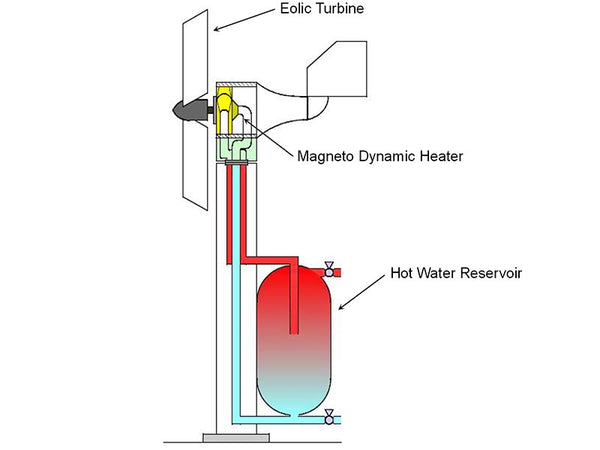
The role of wind heating is to convert wind energy into heat energy for domestic or industrial and agricultural heating needs. There are usually three conversion methods. The first is to use a wind turbine to generate electricity, and then pass the electricity into the resistance wire to generate heat. This is an indirect heating method, and the conversion efficiency is not high. The second is to use a wind turbine to drive an air compressor to compress the air and release heat. The conversion efficiency of this method is not high. The third is to drive the agitator to rotate at a high speed and stir the liquid directly through the transmission to heat the wind turbine. This method has the highest conversion efficiency. In addition, it is also an effective method to generate heat by friction of solid materials by using wind.
Japan has adopted wind heating in 1981 to raise eels in Hokkaido and use them for greenhouse heating in Kyoto and other places. Denmark, the Netherlands, the United States, New Zealand, etc. also use wind heaters for domestic heating. This is an effective measure to save energy and improve people's living standards. Countries such as Europe, America and Japan are further developing research and development work in this area.
(4)Wind turbine
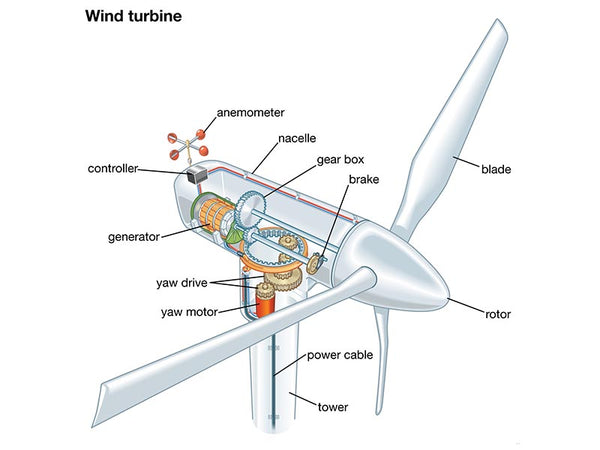
Windmills first appeared in Persia, at first they were vertical-axis wing-plate windmills, and later horizontal-axis windmills were invented. After the windmill was introduced to Europe, it has been widely used in Europe in the 15th century. The Netherlands, Belgium and other countries have built windmills with a power of more than 66 kilowatts for drainage. Since the end of the 18th century, with the development of industrial technology, the structure and performance of windmills have been greatly improved, and manual control and mechanical automatic control mechanisms have been used to change the blade pitch to adjust the speed of the wind turbine.
The idea of using wind turbines for power generation began in 1890 in a Danish wind power project.
By 1918, Denmark had 120 wind turbines with rated power ranging from 5 to 25 kilowatts. After the First World War, the advanced technology of manufacturing aircraft propellers and modern aerodynamic theory created conditions for the design of wind turbine blades, so modern high-speed wind turbines appeared.
Before and after World War II, due to the high energy demand, some European countries and the United States successively built a number of large wind turbines. In 1941, the United States built a two-blade wind turbine with a diameter of 53.3 meters and an output power of 1,250 kilowatts when the wind speed was 13.4 meters per second. Britain built three wind turbines with a power of 100 kilowatts in the 1950s. One of the structures is quite unique. It consists of a 26-meter-high hollow tower and a 24.4-meter-diameter wind wheel with wingtip openings. The pressure difference caused by the rotation of the wind wheel forces the air to enter the tower from the vent at the bottom of the tower, pass through the air turbine in the tower and then overflow from the wingtip vent. From the late 1950s to the mid-1960s, France successively built three large wind turbines with a power of 1,000 kilowatts and 800 kilowatts.
For many centuries, wind turbines, like hydraulic machinery, have been used as power sources to replace human and animal power, and have played an important role in the development of productivity. The wide application of electromechanical power in modern times and the discovery of oil fields in the Middle East in the 1950s slowed down the development of wind turbines.